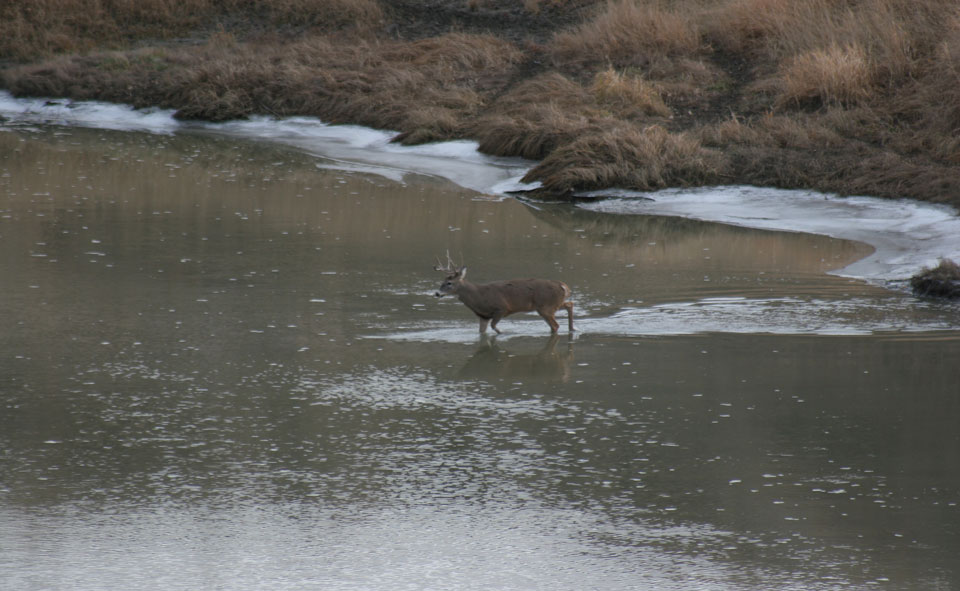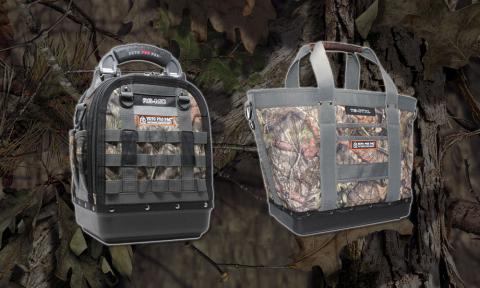Bob Humphrey

Most deer hunters are at least aware of CWD (Chronic Wasting Disease), and many are familiar with the potential threat it holds to deer populations. Those who have kept up with the news have been hearing for some time now that the sky is falling on the whitetail deer world, and recent assessments and predictions paint a far more dire picture than ever before. But just when it seems all is lost, a dim ray of hope breaks through the clouds.
According to Pennsylvania ecologist John Eveland, we’ve been looking at the problem from the wrong angle, and a solution could come more easily and much sooner than anyone imagined. The more cynical might say that such things only happen in fairy tales. So is this recent revelation only giving false hope, or is there real reason to be optimistic?
Eveland’s announcement came at a February 2, 2019 press conference organized by Unified Sportsmen of Pennsylvania and held at the Pennsylvania State Capitol Complex. Eveland, a professional forester, wildlife biologist and ecologist, was instrumental in Pennsylvania’s successful elk recovery program, and more recently conducted a comprehensive assessment of the Pennsylvania Game Commission's deer management program.
In his introductory comments, Eveland cautioned, “Both deer and elk are vulnerable in Pennsylvania and long-term studies in other states, as well as my own wildlife disease research with elk, indicate that if there is not a dramatic change to our current CWD disease management approach, that we will face the effective extinction of deer and elk in Pennsylvania for generations, likely for a century.” Meanwhile, wildlife officials in other states have made similarly dire observations.
Paradigm Shift
That change Eveland refers to in how we approach disease management may have already begun. “After decades of searching, no cure has been found for this supposedly prion-caused disease — that is until now,” he averred. Eveland was referring to recent work of neuropathologist Dr. Frank Bastian with the Louisiana State University College of Agriculture, whose research breaks from the more traditional theories of what causes CWD.
Conventional wisdom says CWD, a type of transmissible spongiform encephalopathy (TSE) similar to scrapie in sheep and Creutzfeldt-Jakob (CJD) disease in humans, is the result of a malformed protein called a prion. Once infection occurs, these prions cause healthy proteins in the central nervous system to also become misfolded. The disease is 100 percent fatal and infected individuals endure a prolonged death, as the name implies, wasting away.
According to Eveland however, “Dr. Bastian... has discovered that CWD is actually caused by a previously unknown bacteria called Spiroplasma, and that prions are simply a by-product of the bacterial infection.” Eveland calls this a game-changer because, “It is now possible to develop a vaccine, an antibiotic to prevent and cure CWD.”
Eveland then described Dr. Bastian’s planned three-step approach. Within possibly a year, he would develop a diagnostic test kit hunters can carry in the field to test their kill for presence of the bacteria. There is still a lot we don’t know about CWD, but regardless of whether it is caused by prions or bacteria, we do know it is in the same family of TSE diseases as Creutzfeldt-Jakob or mad cow disease, which is transmissible to humans from infected animals. There is increasing concern that spread of CWD or some mutation thereof could also be transmitted to people.
Within two years, Bastian plans to develop an injectable vaccine for captive deer and elk, representing possibly the only way to prevent total collapse of the deer farming industry, according to Eveland. And within three years, Bastian hopes to design a nasal or oral vaccine to be administered to wild deer and elk. The potential benefits of that are enormous, and transcend deer to livestock, predators and possibly even humans.
According to Eveland, research has shown as many as 15 percent of Alzheimer patients have been misdiagnosed, and actually suffer from CJD. Once his work is done with CWD, Dr. Bastian plans to extend his research into human health and possibly a cure for CJD and other neurodegenerative diseases like ALS and Parkinson’s.

Too Good to Be True
If you think this all sounds too good to be true, you’re not alone. In a Mississippi Clarion Ledger article, Russ Walsh, executive director of the Mississippi Department of Wildlife, Fisheries, and Parks Wildlife Bureau, said Bastian's work needs to be vetted and replicated before it is taken as fact. "Certainly, it could be plausible. There's still a lot of questions about prions and the prion theory. The scientific community will know more through research. This could be a large paradigm shift in the scientific community."
Among the testing he’s referring to is a long-term study in Canada where scientists exposed macaques to CWD by feeding them venison from infected animals. Two of the macaques developed a prion disease but results have never been published in a peer-reviewed paper, and thus far no other researchers have been able to duplicate the results. One who tried is Brent Race, staff scientist at the Laboratory of Persistent Viral Diseases at the National Institute of Allergy and Infectious Diseases (NIAID). In the process however, he found, “We can get robust prion infection without Spiroplasma.” While he doesn’t completely discount Bastion’s theory, Race’s research suggests more work needs to be done.
Alternate Hypothesis
Meanwhile in Canada, Judd Aiken of the University of Alberta and his colleagues recently published results of their work on soils as an environmental reservoir of infectivity. Some scientists feel that CWD may be passed from one deer to another indirectly through soil, and probability of infection is therefore increased when deer are concentrated by supplemental feeding and through the use of urine-based lures. By testing that hypothesis, Aiken’s group discovered that a major compound in soil organic matter can differentially bind prions, degrading them and decreasing infectivity.
We’re not out of the woods yet but recent developments suggest there is reason for hope. Clearly, more work needs to be done and the potential human health benefits of Bastian’s work should foster greater support. Meanwhile, Canadian researchers are working from the ground up and may eventually discover that in deer diseases, as with food plots, it all begins with the soil.
What this means to the hunter is that researchers are thinking outside the box to determine the cause and treatment of CWD, and there is hope. Gamekeepers should continue supporting research efforts as the science and research behind this glimmer of hope matures. Gamekeepers will be called on to help protect deer and elk herds from this dreaded disease if any current theories prove true.
Bob Humphrey is a certified wildlife biologist with B.S. and M.S. degrees in wildlife biology. He has worked for the U.S. Fish and Wildlife Service, and with several state wildlife agencies and non-government conservation organizations as a private contractor.






























